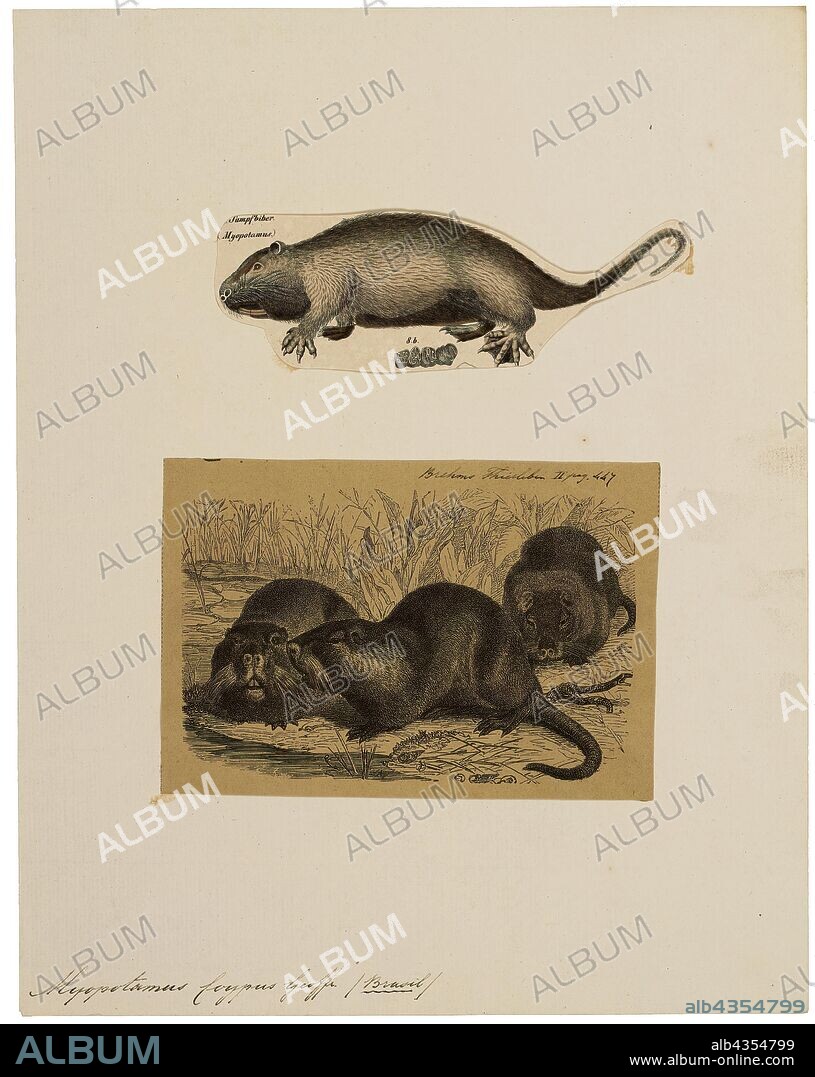alb4354799
Myopotamus coypus, Print, The coypu, also known as the nutria, is a large, herbivorous, semiaquatic rodent. Classified for a long time as the only member of the family Myocastoridae. Myocastor is actually nested within Echimyidae, the family of the spiny rats. The coypu lives in burrows alongside stretches of water, and feeds on river plant stems. Originally native to subtropical and temperate South America, it has since been introduced to North America, Europe, Asia, and Africa, primarily by fur farmers. Although it is still hunted and trapped for its fur in some regions, its destructive burrowing and feeding habits often bring it into conflict with humans, and it is considered an invasive species., 1700-1880.

|
Añadir a otro lightbox |
|
Añadir a otro lightbox |



¿Ya tienes cuenta? Iniciar sesión
¿No tienes cuenta? Regístrate
Compra esta imagen.
Selecciona el uso:

Descripción:
Ver traducción automática
Myopotamus coypus, Print, The coypu, also known as the nutria, is a large, herbivorous, semiaquatic rodent. Classified for a long time as the only member of the family Myocastoridae. Myocastor is actually nested within Echimyidae, the family of the spiny rats. The coypu lives in burrows alongside stretches of water, and feeds on river plant stems. Originally native to subtropical and temperate South America, it has since been introduced to North America, Europe, Asia, and Africa, primarily by fur farmers. Although it is still hunted and trapped for its fur in some regions, its destructive burrowing and feeding habits often bring it into conflict with humans, and it is considered an invasive species., 1700-1880
Crédito:
Album / quintlox
Autorizaciones:
Modelo: No - Propiedad: No
¿Preguntas relacionadas con los derechos?
¿Preguntas relacionadas con los derechos?
Tamaño imagen:
4224 x 5310 px | 64.2 MB
Tamaño impresión:
35.8 x 45.0 cm | 14.1 x 17.7 in (300 dpi)
Palabras clave:
AFRICA • AGUA • AMÉRICA DEL NORTE • AMERICA SEPTENTRIONAL • ASIA • CLASIFICADOS • CONFLICTO • CONSIDERA • EUROPA • FAMILIA • FAMILIAR • FAMILIAS • FAMILY • GENTE • IMPRESION • NORTEAMERICA • NUTRIA • PERSONAS • REGIONES • SUBTROPICALES
 Pinterest
Pinterest Twitter
Twitter Facebook
Facebook Copiar enlace
Copiar enlace Email
Email
